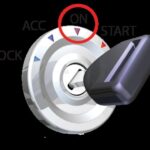Swapping out your BMW E36’s instrument cluster can seem like a straightforward upgrade or repair, but it’s essential to understand the nuances, especially when dealing with models like the 318ti OBD2. Based on real-world experiences, here’s a breakdown to help you navigate cluster swaps effectively.
OBD Generation and Cluster Compatibility
Contrary to some beliefs, the OBD generation (OBD1 or OBD2) isn’t the defining factor in cluster compatibility for E36s. While OBD2 clusters often feature a coding plug, which OBD1 clusters lack, directly swapping an OBD2 cluster into an OBD1 car can frequently trigger warning lights. The key takeaway here is that compatibility isn’t solely dictated by the OBD standard.
Cylinder Count Matters for Accurate Readings
A crucial aspect of cluster swapping is matching the cluster to your engine’s cylinder count. Using a cluster from a different cylinder configuration will lead to inaccurate readings, particularly the RPM. For instance, installing a 6-cylinder cluster in a 4-cylinder 318ti, or vice versa, will result in incorrect RPM display. Therefore, ensure the replacement cluster is from a car with the same number of cylinders as your 318ti.
Mileage Tampering and Coding Plugs
Mileage is another critical consideration. BMW clusters store mileage information, and swapping in a cluster with higher mileage than your original will activate the tamper dot, indicating mileage discrepancy. OBD2 clusters utilize a coding plug that stores the odometer reading. To maintain your original mileage, you should remove the coding plug from your old cluster and insert it into the new one. This process, along with specific software, can transfer your original mileage to the replacement cluster, effectively avoiding the tamper dot issue.
Software Recoding for Cluster Conversion
For advanced users, software tools offer the capability to recode OBD2 clusters. This means that, with the right software, an OBD2 cluster from a 4-cylinder model could potentially be configured for a 6-cylinder car, or vice versa. This opens up possibilities for using a wider range of clusters, but requires specialized knowledge and tools.
Conclusion: Matching Specs is Key
In conclusion, for a successful and hassle-free instrument cluster swap in your 318ti OBD2, the best approach is to source a cluster from a vehicle with matching specifications. Specifically, prioritize a cluster from a BMW E36 with the same engine type (4-cylinder for a 318ti) and ideally the same OBD generation to minimize potential issues. Remember to handle the coding plug carefully to preserve your car’s correct mileage. While experimentation with different clusters is possible, sticking to matching specifications ensures a plug-and-play experience and avoids warning lights or inaccurate readings.
